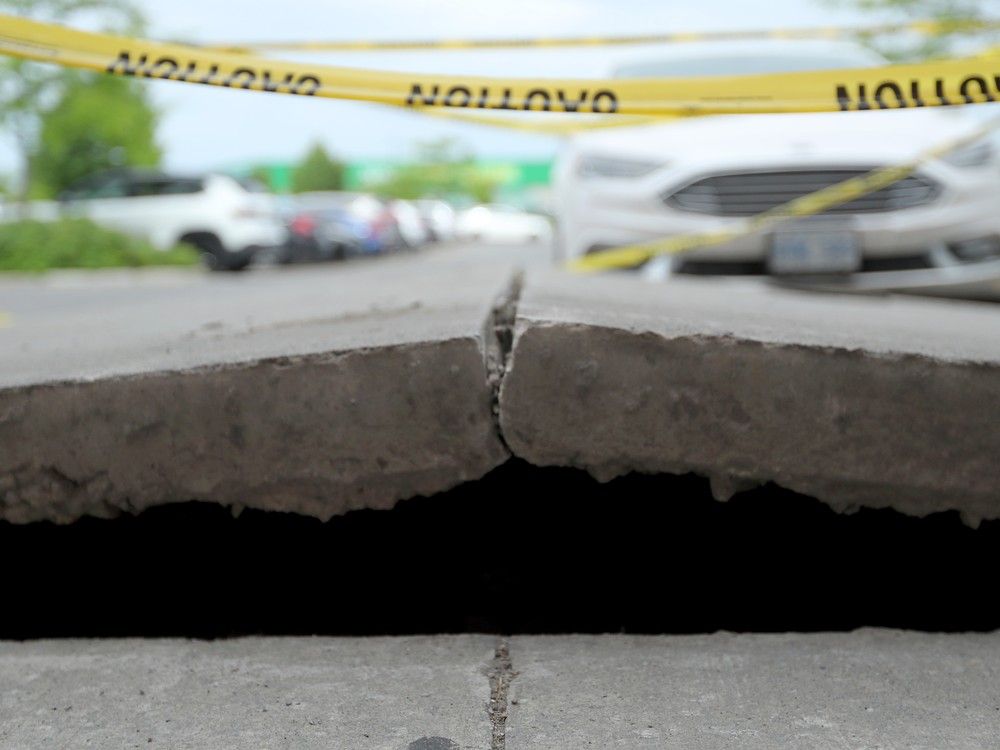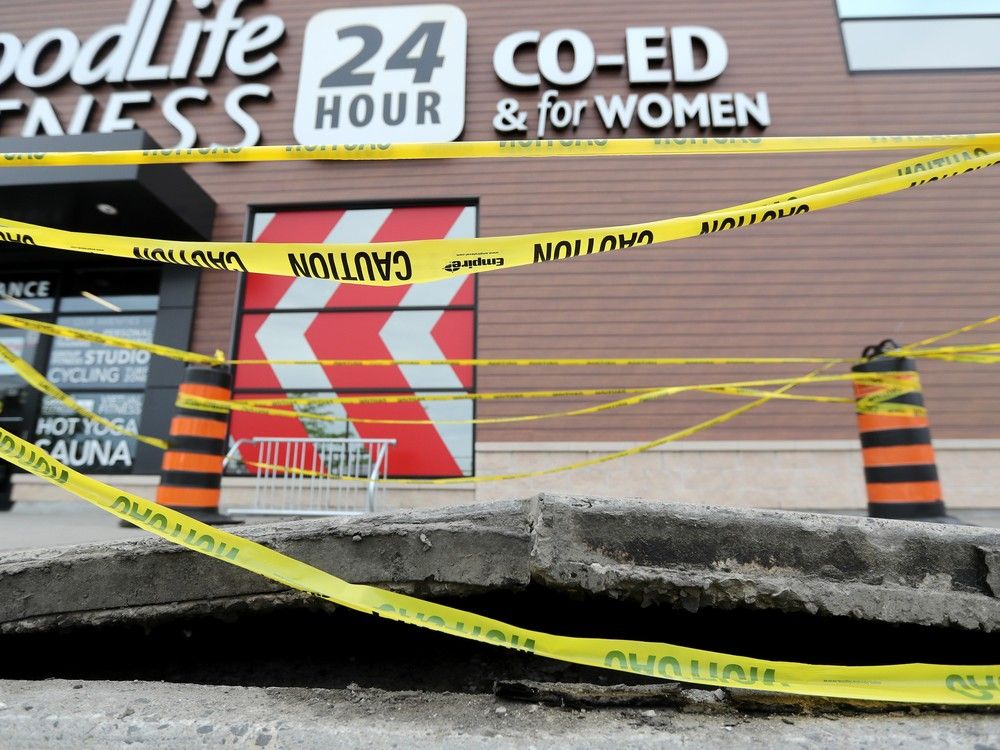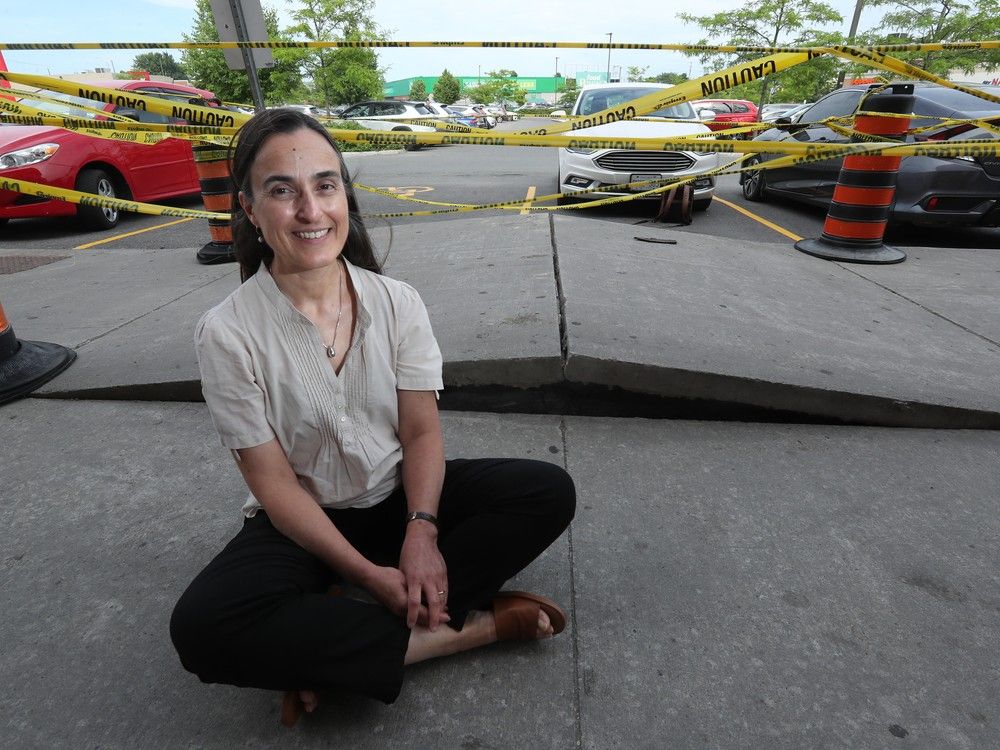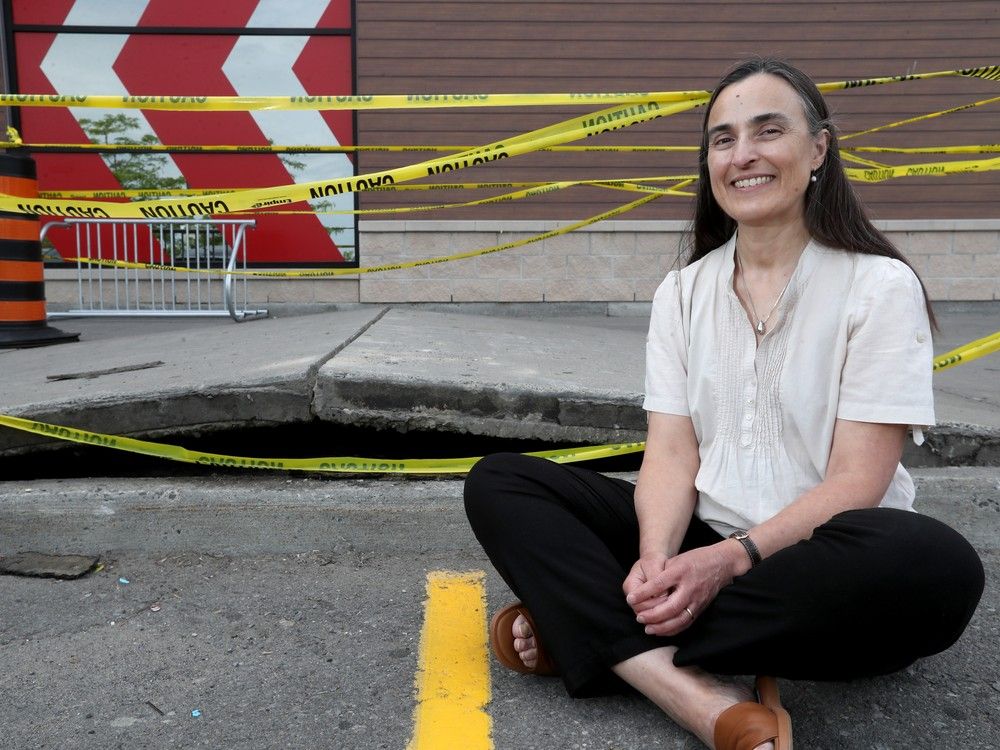A sidewalk outside of the Goodlife Fitness gym at Heron Gate buckled last week amid the city’s
extreme
heatwave
.
Two large concrete slabs outside the gym formed a frown-like arch several inches off of the ground, and were surrounded by caution tape and pylons earlier this week.
The city received eight or nine reports related to similar sidewalk cracks or shifts, according to Bryden Denyes, area manager of roads services with the City of Ottawa.
But why does concrete crack? And does this
pose a risk
to Ottawans and their use of sidewalks or infrastructure?
Here’s everything you need to know about the stress that sidewalks are under in extreme heat conditions:
Why do sidewalks crack?
Sidewalks can crack for different reasons, according to Beatriz Martin-Perez, a University of Ottawa structural engineering professor who studies the durability of concrete.
One reason, Martin-Perez explained, is when the top of the sidewalk in contact with sunlight is hotter than the cooler soil underneath. This tension in temperatures causes the concrete slab to bend and crack on the top.
“Think of it as a sad face that it tries to create,” she said. “Concrete is not that flexible, but eventually it cracks on the point where there is high tension.”

Where and how fast do these sidewalk cracks happen?
There are no specific Ottawa areas prone to cracking sidewalks, Denyes said.
The eight or nine reports he’s received are spread out among “random places,” including downtown, urban and suburban neighbourhoods.
Sidewalk cracks “don’t happen suddenly,” according to Martin-Perez.
There is also no precise temperature that needs to be reached for sidewalks to buckle, but prolonged direct sunlight on top of the concrete is what can create the tension causing a crack.
What about other concrete infrastructure?
Denyes’ maintenance team typically only sees sidewalks impacted by cracks related to heat, he said.
Other infrastructure, like bridges and parking garages can be affected, according to Martin-Perez, because they use similar horizontal concrete slabs. However, she said flexible rubber-like joints within these structures account for expansions and contractions due to changing temperatures.

So how does the city respond to sidewalk cracks?
Denyes’ team has a “very rapid response” when it comes to investigating reports of sidewalk heaving and cracks to quickly mark or barricade the area as necessary, he explained.
From there, Denyes’ team waits to see if the shifted sidewalk returns to its normal position once it cools down. Then, the team comes up with a maintenance plan, which could be a temporary asphalt patch, or a more permanent repair like re-pouring the concrete and completely replacing the sidewalk.
Re-compacting the soil underneath and repouring the concrete can take “a couple of months” to fix, according to Martin-Perez.
In terms of how long repairs can take, Denyes said “it all depends” on monitoring the situation to see if the sidewalk returns to normal, or if extensive repairs are necessary.

Are these sidewalk cracks a danger to the community?
Sidewalk cracks don’t pose a risk to the community, according to Martin-Perez, because of how long it can take for a significant crack to form.
“It’s not like you’re walking and it’s just going to pop like that,” she said.
People can walk around the damaged sidewalk, Martin-Perez suggested, adding that pavement cracks in the middle of the road are often more dangerous to the cars that may drive over them.
“I see more of a hazard in terms of serviceability when people are using the infrastructure, than something that would be a threat to human life,” she said.
From a “safety perspective,” the city prioritizes fixing sidewalks that don’t return to normal once they’ve cooled off, Denyes said.
So how can the city build stronger sidewalks?
Like bridges and other concrete buildings, flexible expansion joints are built within sidewalks to prevent crack formations. Revising design guidelines and calculating whether the distance between expansion joints has to be larger or smaller is key to building stronger sidewalks, Martin-Perez said.
Denyes’ team shares their maintenance data with the city’s Infrastructure and Water Services department, who Denyes says set the standard for construction specifications.
“We have shared our data with their team so they can look at it through a climate resilient lens when designing,” he said.
“So whenever we see these abnormal conditions, we make sure we’re sharing that with our engineering teams so they can look at it and say, ‘Why is this happening? How can we look at preventing this in the future?’”
Related
- ‘Only a matter of time’ until Ottawa faces a catastrophic heat wave
- After days of dangerous heat, should Ottawa collect heat death data?



